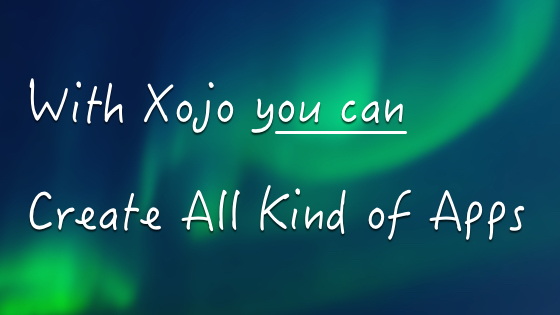As you may have heard, we had to make the difficult decision to cancel XOJO.CONNECT 2020 in Nashville. Since we know you were waiting to…
Comments closedCategory: Cross-Platform
It’s always a good time to learn something new! And maybe you have some free time on your hands now? We know our screen time is up this year, so let’s put that extra screen time to good use and learn a new skill – programming. If you are going to add programming to your skillset, it’s logical to begin with a language that makes it simple to learn the basics of programming. Let me show you a learning path you can follow over 14 days that is aimed at giving you a confident and capable to start to programming.
Comments closedThis tutorial will show you how to deploy your SQLite based projects so they behave right on Desktop, Web and iOS, copying the database file to the right place on every target.
Comments closedToday we are pleased to announce the winners of the 2020 Xojo Design Awards. Judging is never an easy job, but this year the submissions were such a diverse range of apps we found it both exciting and difficult! The Design Awards honor excellence in software design. These awards are a great opportunity to learn about some of the best apps made with Xojo. Support Xojo and the Xojo community by sharing and congratulating these winners!
Comments closedDelegates are one of those advanced features you can find in the Xojo programming language, and it’s a really powerful one! Once you discover and comprehend all the flexibility you can get from Delegates, I’m pretty sure you’ll start to start using them! Through the use of Delegates, you can dynamically change the code to execute.
Comments closedAt Xojo we did the hard work of creating a framework with an API that manages the nuances, intricacies, and subtle yet important differences between 7 different platforms (macOS, Windows, Linux, web, Raspberry Pi, iOS and soon, Android) so you can focus on what makes your application unique. We have been doing it for over 20 years.
Comments closedLearn to create a solar system in Xojo with the help of the MBS Xojo Plugin component SceneKit. SceneKit is an Apple framework that supplies functions for graphic and animation designs.
Comments closedWith so many programming languages and development environments around … why you should try Xojo? I could tell you more than 400,000 reasons to just jump-in right away; reasons I’ve heard for over 10 years now from Xojo users around the world that are building all kind of apps, products and solutions in all kinds of fields. Nevertheless, if I really think about, all of these reasons can be condensed into the following 10 main points. Continue reading and I’m pretty sure you will want to give Xojo a try too!
Comments closedThis guide is going to walk you through the steps to set up in-app purchases in your iOS apps. It may be best to get…
Comments closed

